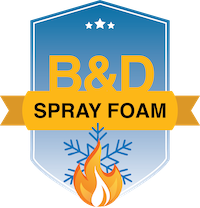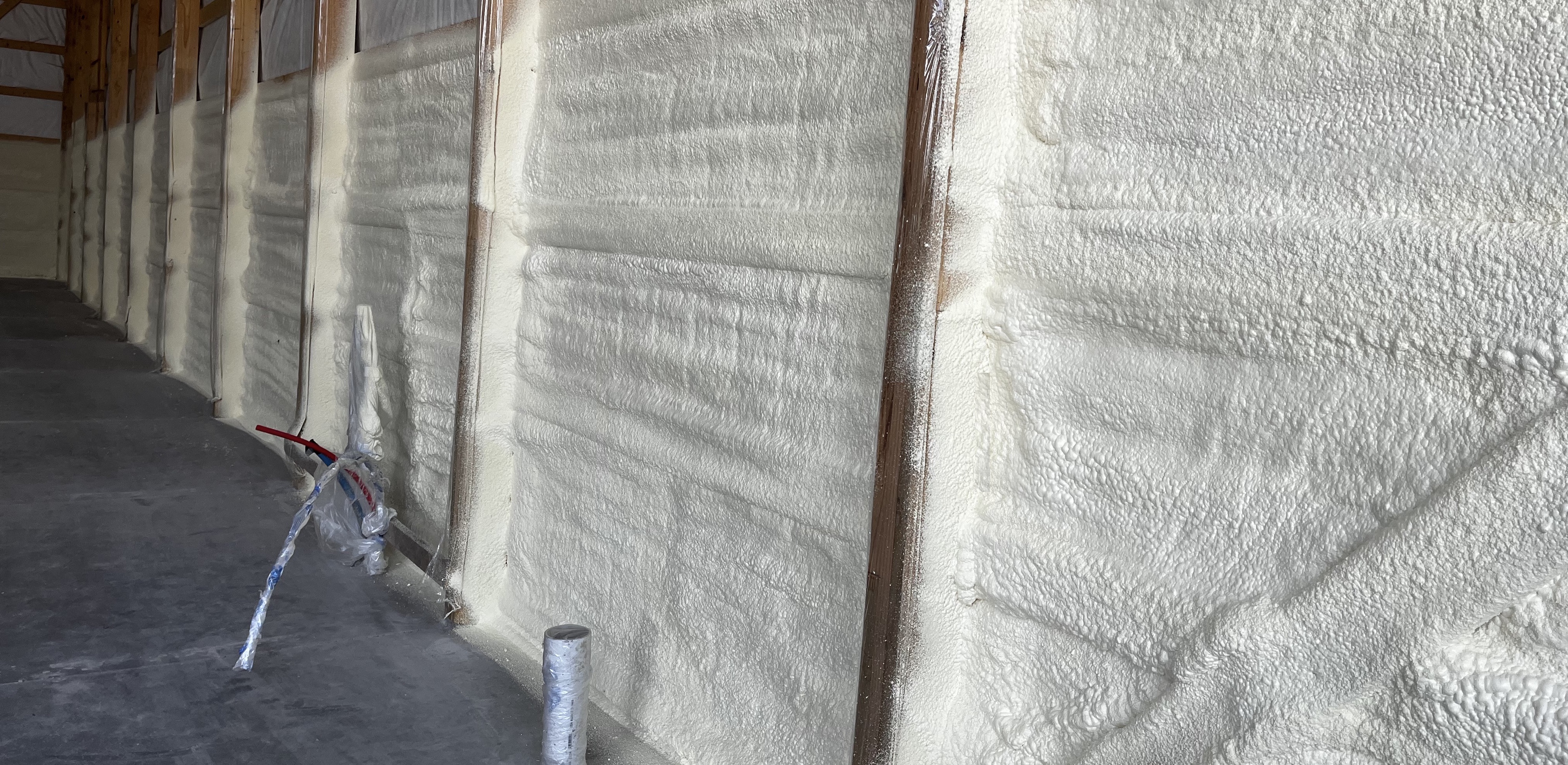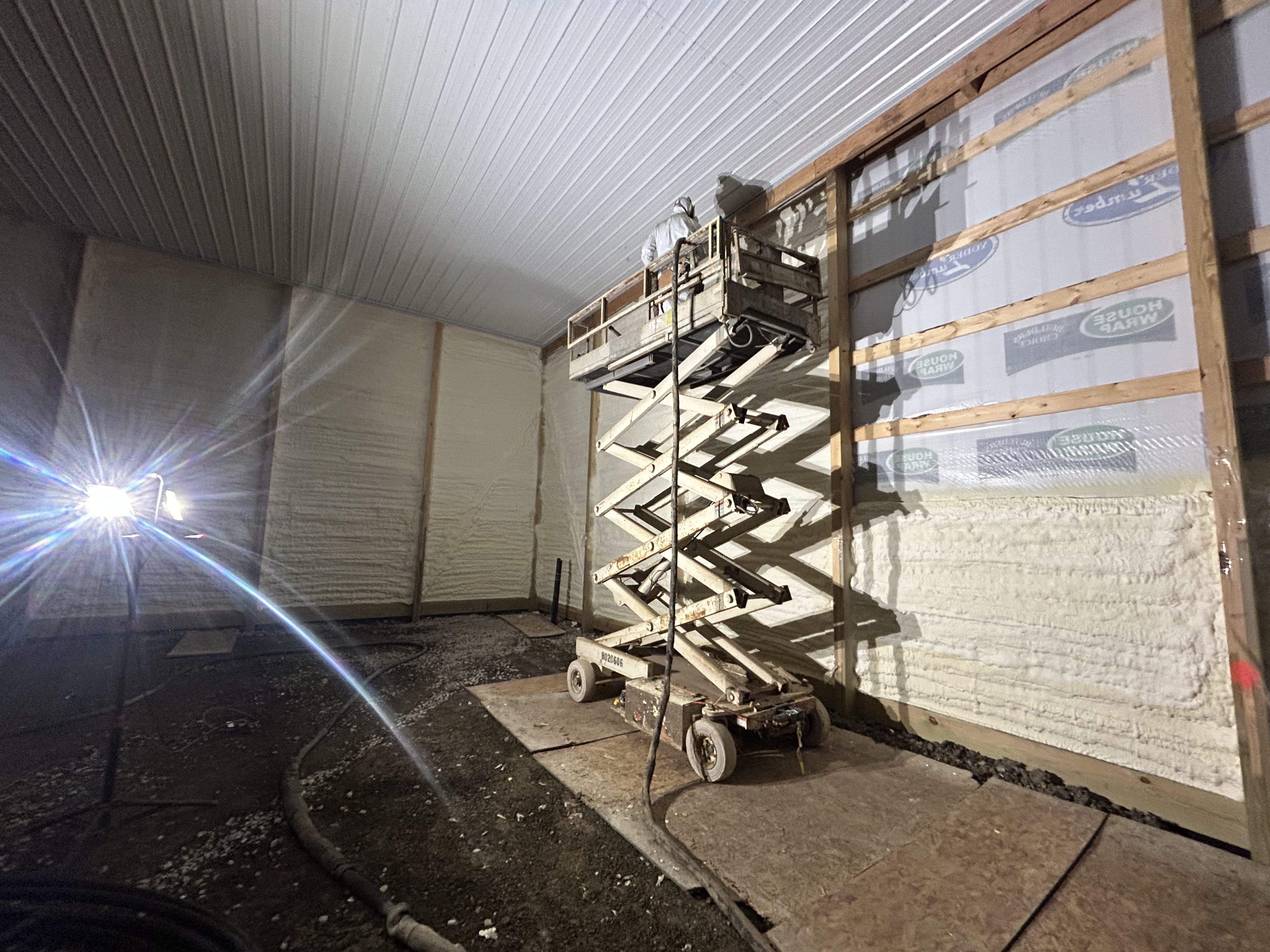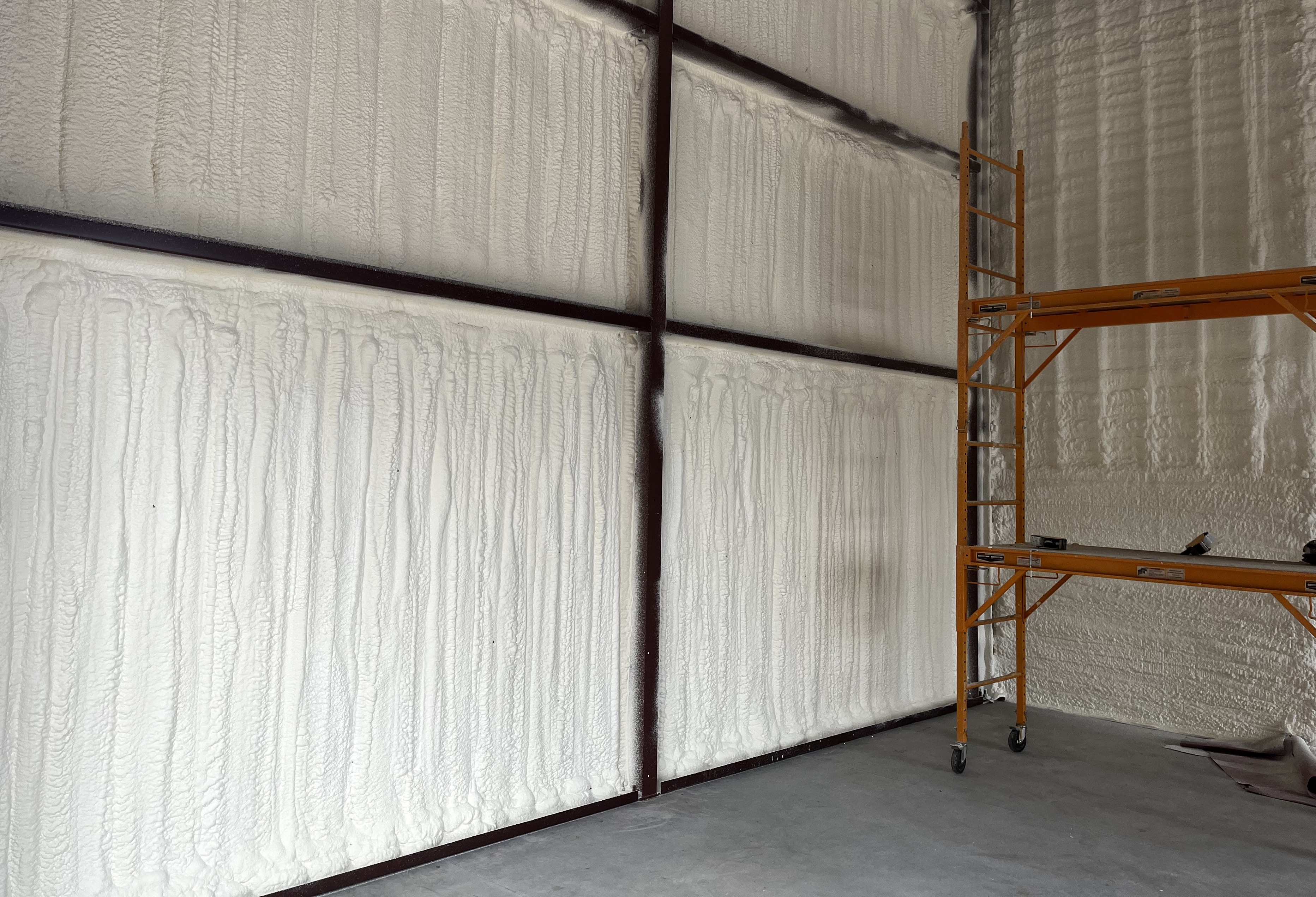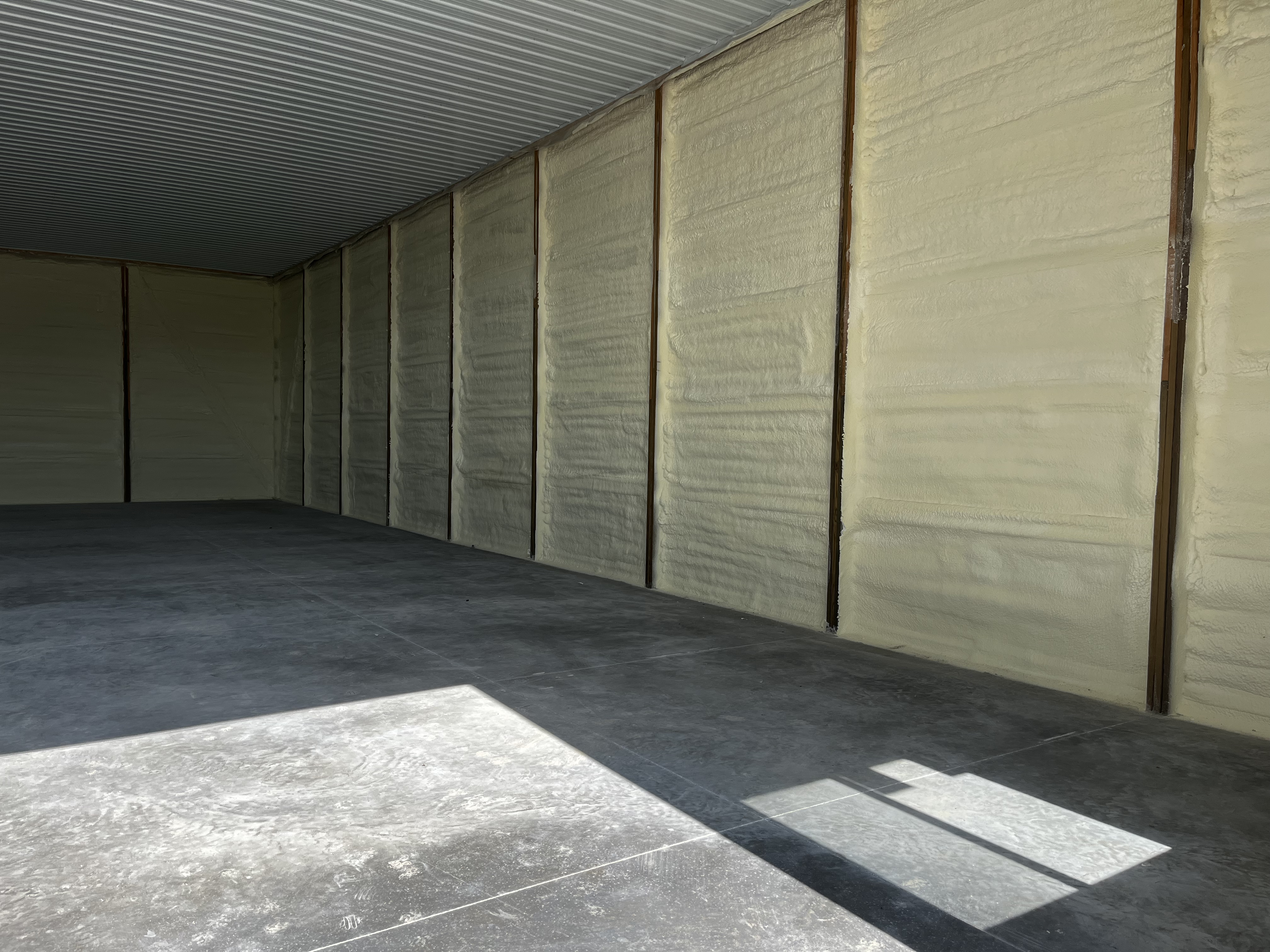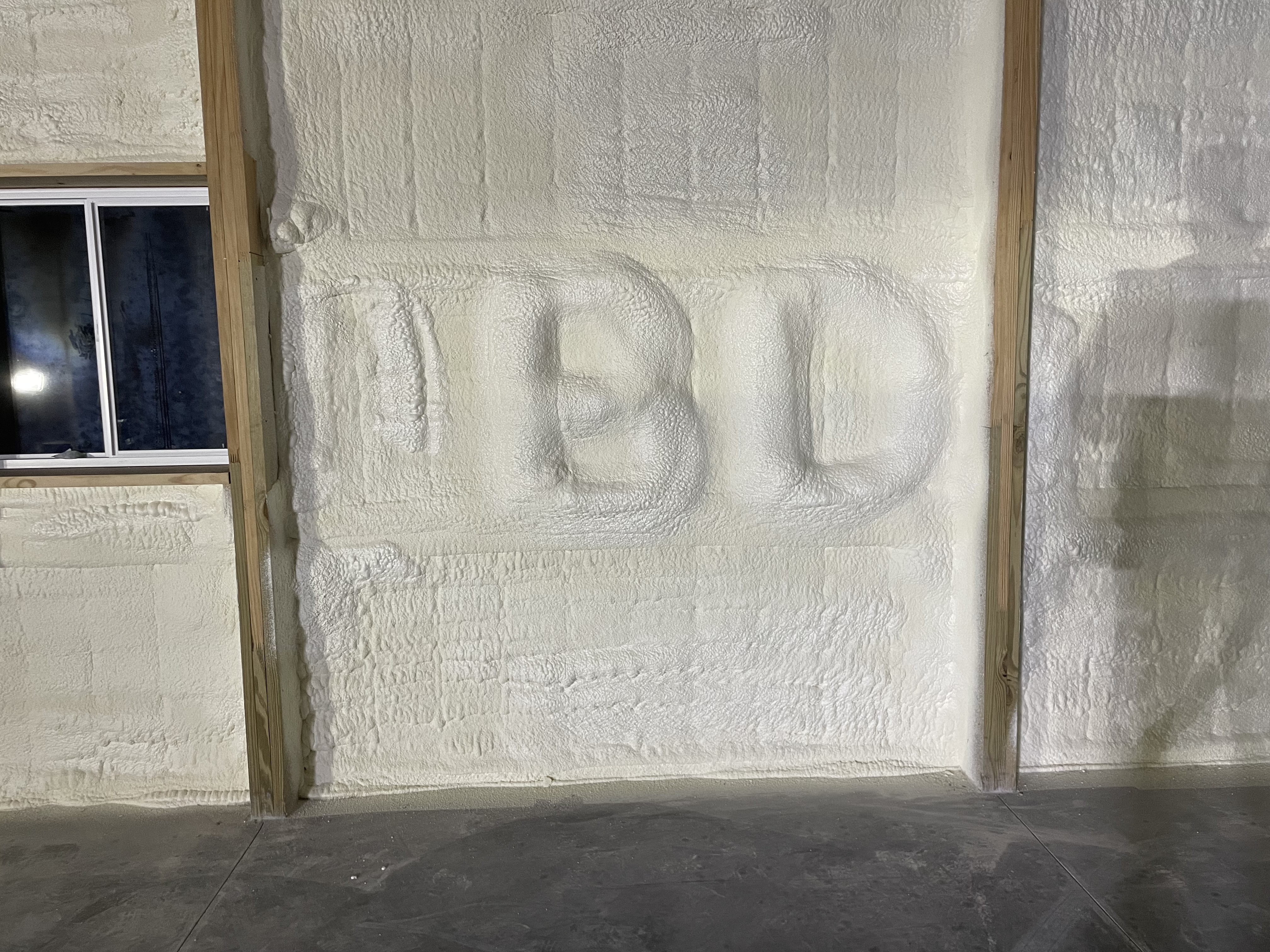Closed-Cell Spray Foam
Closed-cell spray foam is a two-component polyurethane foam that, when mixed, expands and hardens into a dense, rigid structure. Its unique cellular structure is completely sealed, preventing air and moisture from passing through.
Key Benefits of Closed-Cell Spray Foam:
-
Superior R-Value:
Closed-cell foam boasts a higher R-value (approximately R-7 per inch) than open-cell, meaning it provides greater thermal resistance with less thickness. This is ideal for maximizing insulation in tight spaces. Excellent Air Barrier:
The airtight seal created by closed-cell foam significantly reduces air leakage, minimizing drafts and energy loss.Moisture Resistance:
Closed-cell foam is highly resistant to moisture, making it an excellent choice for areas prone to humidity or water exposure. It even acts as a vapor retarder in some applications.Structural Enhancement:
The rigid nature of closed-cell foam can add structural strength to walls and roofs. Estimates show a 6X structuraly integrity gain.Ideal for:
Roofs, walls, large open cavitys, and areas where space is limited or moisture is a concern.
Open-Cell Spray Foam
Open-cell spray foam is also a two-component polyurethane foam, but its cellular structure is not completely sealed. This allows moisture to pass through, giving it a softer, more flexible texture. A cross-section cut of open cell spray foam would remind you of a Nerf football.
Key Benefits of Open-Cell Spray Foam:
-
Lower Cost:
Open-cell foam is generally less expensive than closed-cell foam. Sound Dampening:
The open-cell structure provides excellent sound absorption, making it a good choice for interior walls and ceilings where noise reduction is desired.Flexibility:
Open-cell foam can conform to complex shapes and fill small cavities easily.Breathability:
While not a vapor barrier, open-cell foam allows some moisture to pass through, which can be beneficial in certain applications.Ideal for:
Interior walls, ceilings, and spaces where sound dampening is a priority.
